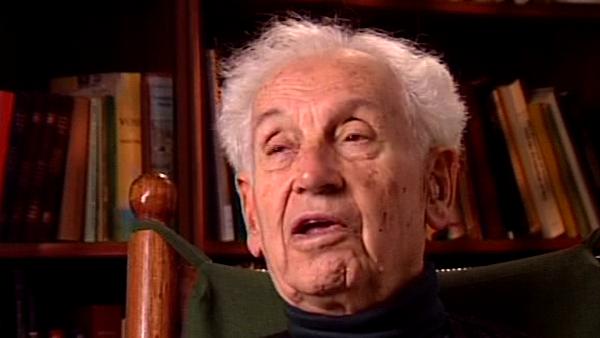NEXT STORY

My catalogue of the birds of New Guinea
RELATED STORIES

NEXT STORY

My catalogue of the birds of New Guinea
RELATED STORIES


|
Views | Duration | |
|---|---|---|---|
| 31. Biogeography: plate tectonics | 247 | 01:46 | |
| 32. The fauna of Australia | 214 | 01:40 | |
| 33. Discontinuous faunas | 185 | 01:34 | |
| 34. Defining the meaning of Wallace's Line | 265 | 03:44 | |
| 35. The pan-Pacific science conference | 152 | 01:28 | |
| 36. MacArthur and Wilson's formula | 233 | 03:16 | |
| 37. An analysis of the birds of North America | 153 | 01:13 | |
| 38. Bird colonization | 148 | 01:22 | |
| 39. Working on classifying species and subspecies | 184 | 02:38 | |
| 40. My catalogue of the birds of New Guinea | 154 | 02:48 |


In these many years beginning, I would say, right after my PhD thesis where I did, at [Erwin] Stresemann's suggestion, an analysis of the so-called snowfinches… that was 1926, ‘27. From there until my very most recent ornithological papers I constantly worked with birds and made discoveries one after the other. Now the… one of the most basic contributions that I made was when working up the material of the Whitney and Rothschild collections, I took one genus after the other of birds and revised it. I established how many species there were, how many subspecies could be recognized, what was the distribution, what names are not valid, are synonyms or others, and I did this for many… for many groups. This was the first time this had been done since the 1880s or 1890s, and… I don't whether I should be happy about this or unhappy, but in most cases my analysis was so definitive that nobody has worked on these genera since, and… and nobody has ever claimed that… that what I had done was wrong… and it might have been wrong, how do I know? In the course of these studies I discovered 25 new species of birds and over 400 new subspecies. And… I… made the… I was the first one to clearly state that various groups of birds like the Australian flycatchers, warblers, shrikes, nuthatches, creepers, which are… have… have always been associated with the Asiatic or European birds with the same vernacular name, were not all related to them, but were endemic Australian elements. At the time I had no way of determining to which other Australian birds they might be most closely related. This is something that later on Charles Sibley established by using molecular methods, but I don't think he ever mentions that I… a good many years before him, had already established that these were not northern elements but… autonomous Australian elements.
The late German-American biologist Ernst Mayr (1904-2005) was a leading light in the field of evolutionary biology, gaining a PhD at the age of 21. He was also a tropical explorer and ornithologist who undertook an expedition to New Guinea and collected several thousand bird skins. In 1931 he accepted a curatorial position at the American Museum of Natural History. During his time at the museum, aged 37, he published his seminal work 'Systematics and Origin of the Species' which integrated the theories of Darwin and Mendel and is considered one of his greatest works.
Title: Working on classifying species and subspecies
Listeners: Walter J. Bock
Walter J. Bock is Professor of Evolutionary Biology at Columbia University. He received his B.Sc. from Cornell and his M.A. and Ph.D. from Harvard. His research lies in the areas of organismal and evolutionary biology, with a special emphasis on functional and evolutionary morphology of the skeleto-muscular system, specifically the feeding apparatus of birds.
Tags: Asia, Europe, 1926, 1927, 1880s, 1890s, Whitney South Seas Expedition, Walter Rothschild, Charles Sibley, Erwin Stresemann
Duration: 2 minutes, 39 seconds
Date story recorded: October 1997
Date story went live: 24 January 2008